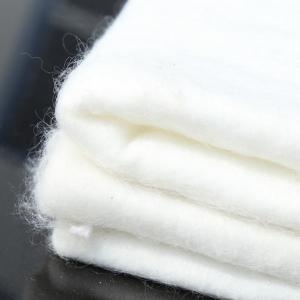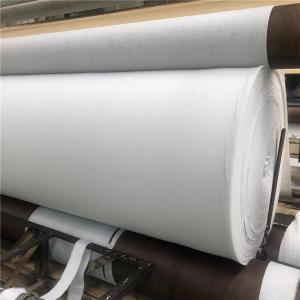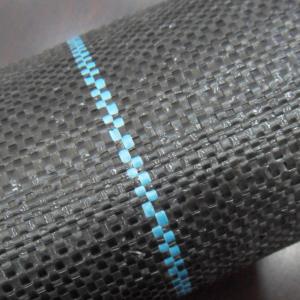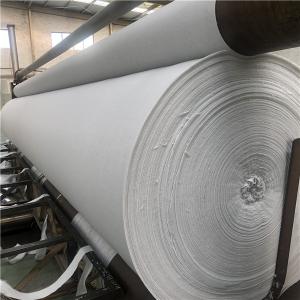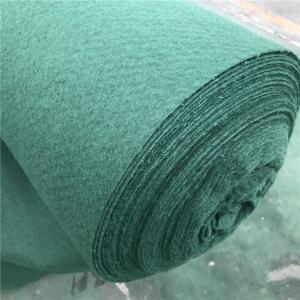Various Non-woven Geotextile for Construction
- Loading Port:
- Guangzhou
- Payment Terms:
- TT or LC
- Min Order Qty:
- 10 m²
- Supply Capability:
- 999999 m²/month
OKorder Service Pledge
OKorder Financial Service
You Might Also Like
We provide various parameters and types of geotextiles, including filament non-woven geotextile, Non Woven Polypropylene Geotextile, staple geotextile, needle punched non-woven geotextile, polypropylene non-woven geotextile, inverted filter geotextile, woven geotextile, curing geotextile, etc. We have a variety of standard specifications of geotextiles, and can also provide you with specific specifications of geotextile production. If you want to purchase, we will provide samples and mail them to you, and finally we will supply for you at the wholesale price of the manufacturer. Because different parameters have different prices, if you want to know the detailed parameters and prices, please contact us to obtain the sample book.
Product specification: 100g/㎡~800g/㎡
Package specification: 1 m-7 m wide; Length: 50m-100m (according to customer requirements)
What is geotextile?
Geotextiles, also known as geotextiles, are permeable geosynthetics made of synthetic fibers through needle punching or weaving. Geotextile is one of the new geosynthetics. The finished product is cloth, generally 4-6 meters wide and 50-100 meters long. Geotextiles are divided into woven geotextiles and non-woven filament geotextiles.
Characteristics of geotextile
1. High strength, due to the use of plastic fiber, it can maintain full strength and elongation under dry and wet conditions.
2. Corrosion resistance. It can resist corrosion for a long time in soil and water with different pH values.
3. Water permeability is good because there are gaps between fibers, so it has good water permeability.
4. Good anti microbial property will not damage microorganisms and insects.
5. The construction is convenient. Because the material is light and soft, the transportation, laying and construction are convenient.
6. Complete specifications: width up to 9 meters. It is the widest product in China, and the mass per unit area is 100-1000g/m2.
Use of geotextile
It is widely used in water conservancy, electric power, mine, highway, railway and other geotechnical projects:
l. Filter material separated by soil layer;
2. Drainage materials for mineral processing of reservoirs and mines, and drainage materials for foundation of high-rise buildings;
3. Anti scour materials for river dams and slope protection;
4. Reinforcing materials for subgrade of railway, highway and airport runways, and reinforcing materials for road construction in marshland;
5. Frost and frost resistant thermal insulation materials;
6. Anti cracking materials for asphalt pavement.
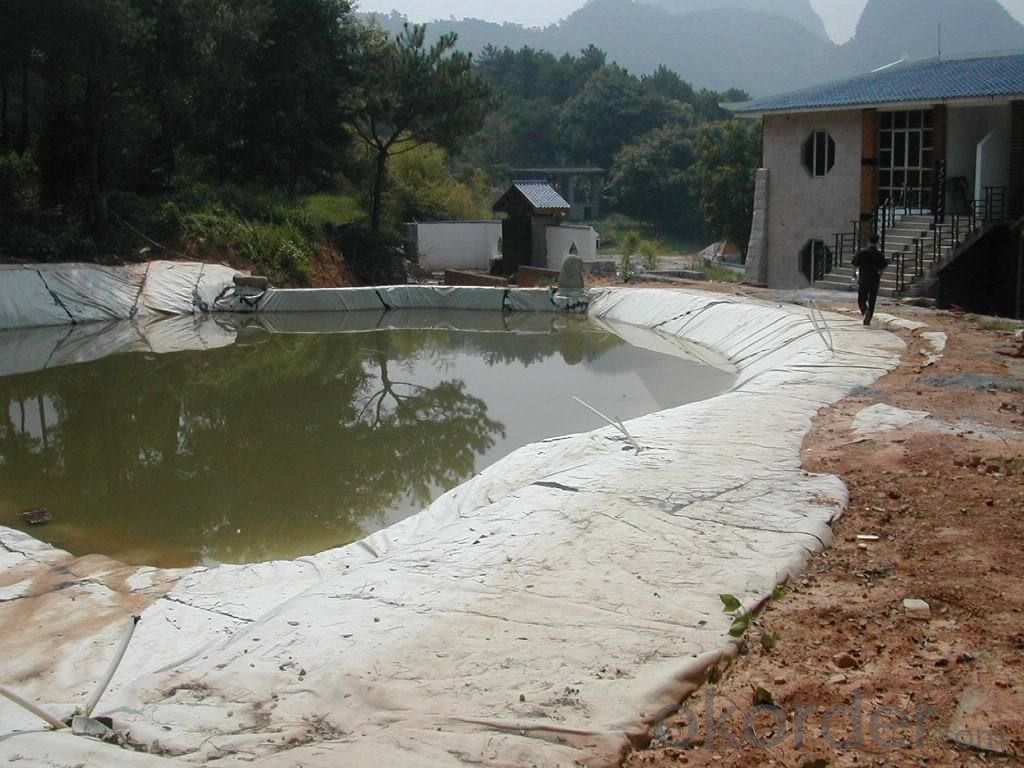
Application field of geotextile
l. It is used as reinforcement in the backfilling of retaining wall or for anchoring the panel of retaining wall. Build wrapped retaining wall or abutment.
2. Reinforce the flexible pavement, repair the cracks on the road, and prevent the pavement from reflecting cracks.
3. Increase the stability of gravel slope and reinforced soil to prevent water and soil loss and frost damage of soil mass at low temperature.
4. The isolation layer between ballast and subgrade, or between subgrade and soft foundation.
5. The isolation layer between artificial fill, rockfill or material yard and foundation, and the isolation between different frozen soil layers. Filtration and reinforcement.
6. The filter layer of the upstream dam surface at the initial stage of the ash storage dam or tailings dam, and the filter layer of the drainage system in the backfill soil of the retaining wall.
7. Filter layer around the drainage pipe or gravel drainage ditch.
8. The filter layer of water well, relief well or baroclinic pipe in hydraulic engineering.
9. The geotextile isolation layer between the highway, airport, railway road and artificial rockfill and the foundation.
10. The earth dam is drained vertically or horizontally and buried in the soil to dissipate the pore water pressure.
11. The drainage behind the impervious geomembrane or under the concrete cover in the earth dam or earth embankment.
12. The seepage around the tunnel shall be eliminated to reduce the external water pressure on the lining and the seepage around the buildings.
13. Drainage of artificial fill ground sports ground.
14. Roads (including temporary roads), railways, embankments, earth rock dams, airports, sports grounds and other projects are used to strengthen soft foundations.
Classification of geotextiles
Short fiber needle punched nonwoven geotextile can be divided into polyester, polypropylene, nylon, vinylon, ethylene and other needle punched nonwoven geotextiles according to raw materials; It can be divided into ordinary type and composite type according to structure. The varieties of staple fiber needle punched nonwoven geotextiles are designed by the production department according to the market demand.
Laying method of geotextile
1. Manual roll paving shall be used, and the cloth surface shall be flat with appropriate deformation allowance.
2. The installation of filament or staple geotextile usually adopts several methods, such as lapping, stitching and welding. The width of stitching and welding is generally more than 0.1m, and the lap width is generally more than 0.2m. Geotextiles that may be exposed for a long time shall be welded or stitched.
3. Sewing of geotextile: All sewing must be continuous (for example, spot sewing is not allowed). The geotextile must overlap at least 150 mm before overlapping. The minimum distance between the needle and the selvage (the exposed edge of the material) shall be at least 25 mm. The sewn geotextile joint most includes one line of linear locking chain joint method. The suture used shall be a resin material with a minimum tension of more than 60N, and have the chemical corrosion resistance and ultraviolet resistance equivalent to or beyond that of geotextile. Any "missing needle" on the sewn geotextile must be re sewn at the affected place. Corresponding measures must be taken to prevent soil, particulate matter or foreign matter from entering the geotextile layer after installation.
4. During construction, the geotextile on the geomembrane shall be naturally lapped, and the geotextile on the upper layer of the geomembrane shall be welded by seam or hot air. Hot air welding is the preferred method for the connection of filament geotextile, that is, the hot air gun is used to heat the connection of two pieces of cloth at an instant of high temperature, so that their parts can reach the melting state, and a certain external force is immediately used to make them firmly bonded together. In the case that thermal bonding cannot be carried out in wet (rainy and snowy) weather, another method - suture connection method shall be adopted for geotextile, that is, special sewing machine shall be used for double suture connection, and chemical ultraviolet resistant suture shall be used. The minimum width is 10cm when sewing, 20cm when natural lapping and 20cm when hot air welding.
5. For the sewing, the suture with the same quality as the geotextile shall be used, and the suture shall be made of materials with stronger resistance to chemical damage and ultraviolet light.
6. After the geotextile is laid and approved by the site supervision engineer, the geomembrane can be laid.
7. The geotextile on the geomembrane is laid as above after the geomembrane is approved by Party A and the Supervisor.
8. The geotextile of each layer shall be numbered TN and BN.
9. The upper and lower layers of geotextile on the membrane shall be buried in the anchorage groove together with the geotextile.
FAQ
We have organized several common questions for our clients,may help you sincerely:
Q1: How about your company?
A1:Our company are one of the largest geosynthetic products supplier in the world.We have the products experience more than 20 years.Already export to USA/Germeny/Australia/Zambia/Brazil etc.more than 20 countries.Almost 10years.Our products including Geocell/Fiberglass Geogrid/Geomembrane/Geotextile/Geonet etc.
Q2.Does your products have good qualitity?
A2:Yes,we have do many big projects such as the 2008 Beijing Olympic BIRD NEST. Divert water from the south to the north project. And our products have CE certificate also.
Q3:How long can we receive the products after purchase?
A3:In the purchase of product within three working days, We will arrange the factory delivery as soon as possible. The pecific time of receiving is related to the state and position of customers.Commonly 15-20 working days can be delivery.
- Q:How do geotextiles help in erosion control?
- Geotextiles help in erosion control by acting as a barrier between the soil and water, preventing erosion by filtering and stabilizing the soil. They provide reinforcement and support to the soil, reducing the impact of water flow and preventing the loss of soil particles. Additionally, geotextiles promote vegetation growth by retaining moisture, enhancing root development, and protecting newly seeded areas from wind and water erosion.
- Q:200g / m2 geotextile how to enter the inspection test
- (Including: wide strip tensile test, trapezoidal tear strength test, CBR bursting strength test, puncture, mechanical properties, including mechanical properties (including: gross weight per unit area, amplitude measurement, thickness measurement); mechanical properties (including: (Including vertical penetration test (constant head method), hydrostatic pressure test, effective pore size test (dry sieve method), clogging test, etc.). Related testing standards: 1. Short wire acupuncture geotextile with reference to GB / T-1998.2. Filament acupuncture geotextile with reference to GB / T-2008.3. Filament woven geotextile GB / T-2008.4 Welded film woven geotextile with reference to GB / T-1998
- Q:Where is the sale of geotextiles in Tibet?
- Tibet geotextile, a variety of specifications, & lt; Ji Han irrigation pit thieves ghosts and bursonoids p & gt;
- Q:What are the advantages of using geotextiles in groundwater protection systems?
- Geotextiles offer several advantages in groundwater protection systems. Firstly, they act as a barrier that prevents soil erosion, thus maintaining the integrity of the groundwater system. Secondly, geotextiles can effectively filter and separate different soil layers, preventing the migration of fine particles and contaminants into the groundwater. Additionally, these textiles have high permeability, allowing water to flow through while retaining solid particles and pollutants. This enhances the overall quality of the groundwater by reducing the presence of harmful substances. Moreover, geotextiles are durable, resistant to biological degradation, and have a long lifespan, making them a cost-effective solution for long-term groundwater protection.
- Q:How do geotextiles contribute to the environmental sustainability of construction projects?
- Geotextiles contribute to the environmental sustainability of construction projects by providing erosion control, improving soil stability, and reducing the need for excavation and disposal of excess soil. They help prevent sediment runoff into nearby water bodies, promote vegetation growth, and prevent contamination of groundwater. Geotextiles also enhance the longevity of infrastructure by providing reinforcement and filtration, thereby minimizing the need for frequent repairs and replacements. Overall, their use reduces environmental impact, conserves resources, and contributes to the long-term sustainability of construction projects.
- Q:What are the different geotextile reinforcement techniques for slopes?
- Some of the different geotextile reinforcement techniques for slopes include the use of geotextile fabrics, geogrids, and geocells. Geotextile fabrics are commonly used to stabilize slopes by providing separation and filtration of soil particles. Geogrids, on the other hand, are high-strength materials that are used to reinforce soil and increase its stability. Geocells are three-dimensional cellular structures that can be filled with soil or other materials to create a stable slope. These techniques can be used individually or in combination to provide effective reinforcement for slopes and prevent erosion.
- Q:Can geotextiles be used in mining tailings management?
- Yes, geotextiles can be used in mining tailings management. Geotextiles are commonly employed as part of a containment system to prevent the spread of contaminated tailings and to provide stability to the tailings impoundment. These textile materials can help separate and filter the solids from the liquid in tailings, reducing the risk of water pollution and improving the overall management of mining waste.
- Q:What are the specifications for geotextiles used in transportation projects?
- Geotextiles used in transportation projects typically have specific specifications in terms of their weight, thickness, tensile strength, permeability, and durability. These specifications ensure that the geotextiles can effectively separate, reinforce, or filter materials in the transportation infrastructure, such as roads, railways, or landfills. Additionally, they must meet certain industry standards and regulations to ensure their effectiveness and longevity in these projects.
- Q:Can geotextiles be used for shoreline protection?
- Yes, geotextiles can be used for shoreline protection. They are commonly used to stabilize coastal areas and prevent erosion by acting as a barrier against wave action and water currents. Geotextiles help to retain sediment and provide structural support, making them an effective solution for shoreline protection projects.
- Q:How do geotextiles contribute to the safety of transportation infrastructure?
- Geotextiles contribute to the safety of transportation infrastructure by providing reinforcement, filtration, and separation functions. They help in stabilizing the soil, preventing erosion, and reducing the risk of settlement or failure of the roads, embankments, and retaining walls. Geotextiles also enhance the drainage system, allowing water to flow through while preventing the accumulation of excess moisture, which can weaken the structure. Overall, geotextiles play a crucial role in improving the durability, stability, and longevity of transportation infrastructure, ensuring safer and more reliable roadways.
1. Manufacturer Overview |
|
|---|---|
| Location | |
| Year Established | |
| Annual Output Value | |
| Main Markets | |
| Company Certifications | |
2. Manufacturer Certificates |
|
|---|---|
| a) Certification Name | |
| Range | |
| Reference | |
| Validity Period | |
3. Manufacturer Capability |
|
|---|---|
| a)Trade Capacity | |
| Nearest Port | |
| Export Percentage | |
| No.of Employees in Trade Department | |
| Language Spoken: | |
| b)Factory Information | |
| Factory Size: | |
| No. of Production Lines | |
| Contract Manufacturing | |
| Product Price Range | |
Send your message to us
Various Non-woven Geotextile for Construction
- Loading Port:
- Guangzhou
- Payment Terms:
- TT or LC
- Min Order Qty:
- 10 m²
- Supply Capability:
- 999999 m²/month
OKorder Service Pledge
OKorder Financial Service
Similar products
New products
Hot products
Related keywords
